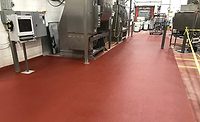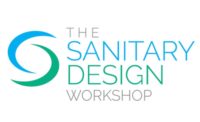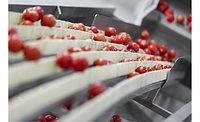2017 Food Safety Report
Designed to shine?: Sanitary design and construction
Facilities and equipment should be built or bought with sanitation and food safety at the top of the priority list.

Cross-contamination from spoilage and pathogenic bacterium as well as food allergens are major concerns for food processors. Proper facility and equipment design is a preventive measure that can help reduce those risks.
Construction materials should be impervious materials such as stainless steel, plastic, rubber or sealed concrete which can be easily maintained, cleaned and sanitized. It also must be compatible with the product, environment and proposed cleaning methods.
The layout of the facility should lend itself to proper traffic control (e.g., an employee who works in a raw area should not walk through processing or packaging areas as part of his or her daily duties). The manufacturing environment is never going to be sterile, but the proper sanitary design can help eliminate niche areas where moisture and food soils collect and make effective cleaning and sanitizing less of a challenge.
Equipment should be designed to prevent entrapment of moisture as well as food particles and should be easily broken down to expose niche areas for inspection and cleaning without requiring special tools, remember the old adage, “If you can’t reach it or see it, you can’t clean it.”
Buy equipment that is fabricated to hygienic design standards (e.g., 3A or NSF) and ask the manufacturer to demonstrate how to properly break down the equipment for effective cleaning. If they can’t do it, how are you supposed to? Involving your cleaning chemical supplier is also a good idea for chemical compatibility and cleaning procedure development.
Floors and drains should not be ignored. The floors and drains are known sources of cross contamination that can occur from splash, aerosols created from high-pressure spray and from handling items that have come into contact with them. Floors should be designed with the proper slope to prevent pooling of water and constructed with a material not prone to flaking or cracking, which creates niches for bacterial growth.
Drains should be designed with screens and baskets to capture debris that could cause blockage or backups. Stationary processing equipment should not be placed over drains because of the cross-contamination potential.
Basic design features considered essential for all types of food processing facilities include:
- Raw material receiving and storage area isolated from processing and packaging areas;
- Tight-fitting and sealed roof vents, exhaust ports and doors to prevent water and pest intrusion;
- Walls, floors and ceilings constructed with impervious surfaces that are easily cleaned;
- Floors sloped properly to drain rapidly and prevent pooling of water;
- Drains constructed with a smooth, easily cleanable surface and adequate drainage capacity;
- Waste disposal area located outside the facility with proper drainage and covered receptacles to discourage pest congregation.
Food safety issues associated with facility or equipment flaws could be avoided with proper research and communication. During the planning stages of construction and new equipment integration, forming a multi-disciplinary team to research and oversee the design, installation and maintenance of the facility infrastructure and equipment can help prevent many of the issues that may be realized after the project is complete. NP
Looking for a reprint of this article?
From high-res PDFs to custom plaques, order your copy today!






